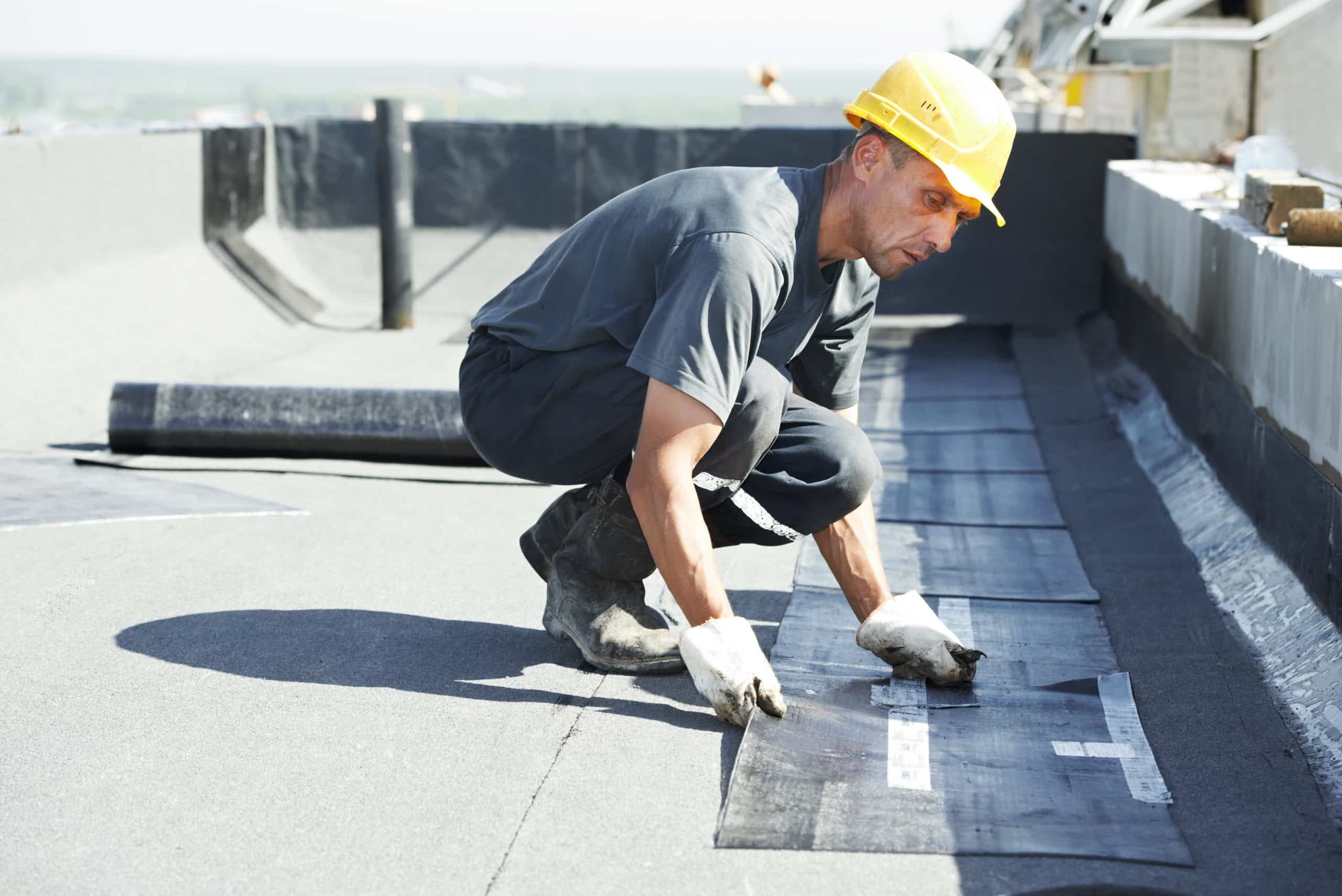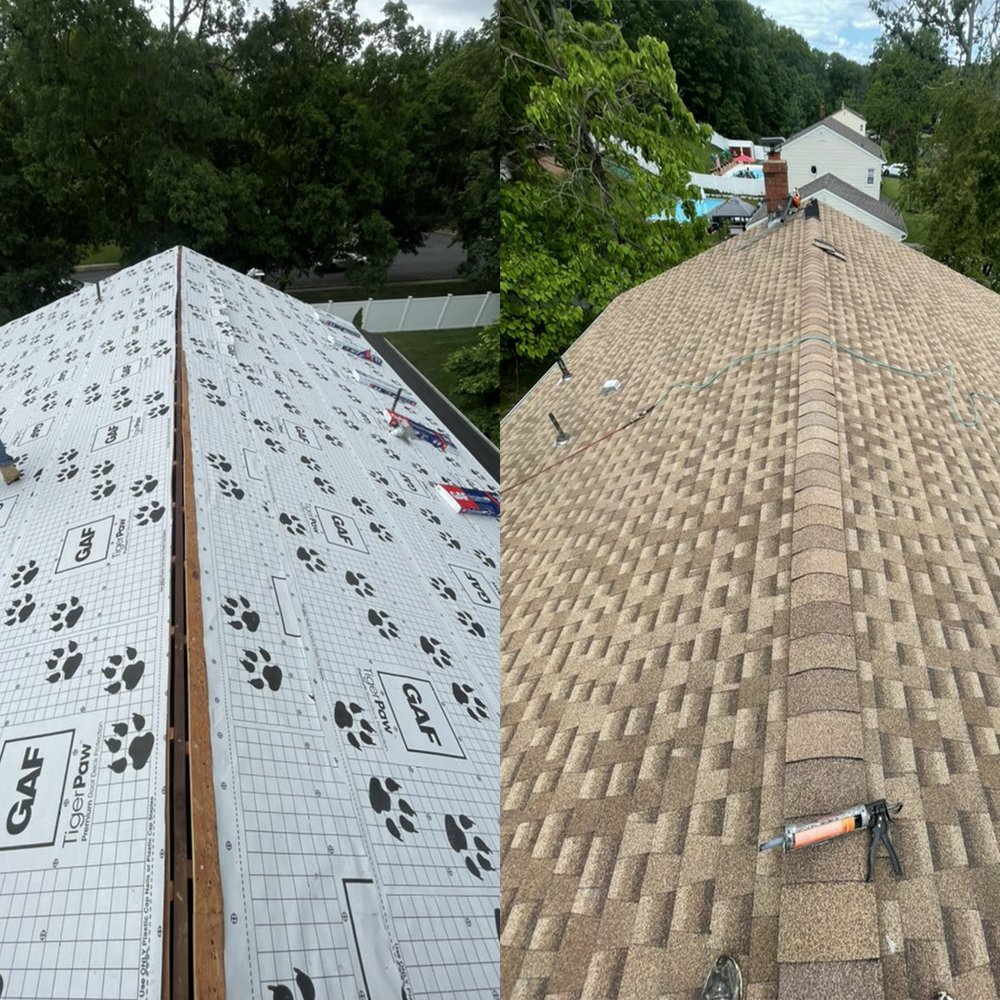Understanding the Different Sorts Of Roof Coverings: A Comprehensive Guide for Homeowners
With a range of options-- varying from the standard gable to the contemporary flat-- each kind provides unique benefits and challenges that must align with the homeowner's details requirements and environmental factors to consider. As we check out the complexities of numerous roofing system kinds, it ends up being evident that one dimension does not fit all; the best selection may stun you.
Gable Roofings
Saddleback roofs, identified by their triangular form, are among one of the most popular roofing designs due to their simpleness and performance in dropping water and snow. This layout features 2 sloping sides that fulfill at a ridge, enabling reliable drainage and lessening the risk of water build-up. The high pitch generally associated with saddleback roofs enhances their capability to take care of heavy precipitation, making them appropriate for numerous climates.
Along with their functional advantages, gable roofing systems supply aesthetic adaptability. They can be adjusted to various building designs, from traditional to contemporary homes. The style can also accommodate extra attributes such as dormer windows, which improve all-natural light and air flow in the attic room space.
Additionally, saddleback roofs supply enough space for insulation, adding to power effectiveness. Homeowners can select from a selection of roof covering materials, including asphalt shingles, metal, and ceramic tiles, better boosting customization alternatives.
Regardless of their benefits, gable roofs may require additional support in areas prone to high winds or heavy snowfall. Generally, the saddleback roof continues to be a favored choice because of its blend of performance, resilience, and visual allure.
Flat Roofs
Flat roofings are typically acknowledged for their minimalist design and sensible applications, specifically in business and industrial setups (oahu roofing). These roofings feature a straight or virtually horizontal surface, which permits very easy building and flexible space application. While they might lack the visual charm of pitched roofing systems, flat roof coverings use various benefits, particularly in urban settings where taking full advantage of space is critical
Among the primary advantages of flat roof coverings is their access. House owners can utilize the roof covering area for various objectives, such as rooftop yards, terraces, or solar panel setups. Additionally, level roofing systems are typically more cost-effective to set up and maintain compared to their sloped equivalents, as they require less materials and labor.
Common materials utilized for flat roofings include built-up roof (BUR), changed asphalt, and single-ply membrane layers, each offering distinctive advantages. Overall, flat roofing systems serve as a practical and versatile option for lots of house owners and organizations alike.
Hip Roof Coverings
Hip roofs are characterized by their sloped sides that assemble at the top, forming a ridge. This design stands out from saddleback roofs, as all 4 sides of a hip roof covering incline downwards towards the walls, offering a more secure framework. The angle of the inclines can vary, allowing for versatility in building visual appeals and functionality.
Among the key advantages of hip roofing systems is their ability to withstand hefty winds and negative weather problems. The sloped surface areas enable far better water drain, minimizing the risk of leakages and water damages. Furthermore, hip roofing systems offer raised attic room area, which can be made use of for storage or perhaps our website converted right into livable locations.
Nevertheless, constructing a hip roofing can be much more intricate and expensive than simpler roofing kinds, such as gable roofings. The additional material and labor associated with producing the slopes and making sure proper architectural honesty can result in greater expenses. In spite of these drawbacks, lots of homeowners prefer hip roofs for their toughness, aesthetic charm, and possibility for energy effectiveness.
Mansard Roofs
Mansard roofing systems, usually acknowledged by their special four-sided design, function 2 slopes on each side, with the lower incline being steeper than the upper. This building design, originating from France in the 17th century, is not only visually enticing but practical, as it takes full advantage of the useful space in the upper floors of a structure. The high reduced slope enables for even more headroom, making it an optimal selection for lofts or attic rooms, which can be exchanged living rooms.
Mansard roofs are characterized by their flexibility, fitting numerous building designs, from typical to modern. They can be built with different products, consisting of asphalt shingles, slate, or metal, providing property owners with a variety of choices to suit their budgets and preferences. Furthermore, the design allows for the integration of dormer windows, enhancing all-natural light and air flow in the top levels.
Nevertheless, it is necessary to think about the prospective downsides. Mansard roofing systems may require even more upkeep because of the complexity of their design, and their high inclines can be challenging for snow and rain runoff. Overall, mansard check it out roofs incorporate style with functionality, making them a prominent choice among home owners looking for unique architectural attributes.
Dropped Roofs
As homeowners significantly look for simplicity and capability in their architectural designs, lost roofing systems have become a prominent choice. Identified by a single sloping plane, a shed roof covering provides a minimalist visual that matches various home designs, from contemporary to rustic.
One of the key advantages of a shed roofing is its straightforward building and construction, which commonly translates to reduce labor and material expenses. This layout permits reliable water drain, decreasing the threat of leaks and water damages. Additionally, the vertical incline offers ample area for skylights, boosting all-natural light within the inside.
Lost roof coverings likewise provide versatility in terms of use. They can be properly incorporated into enhancements, garages, or exterior structures like sheds and pavilions. Moreover, this roof covering style can accommodate different roof products, consisting of steel, asphalt tiles, or also green roofs, aligning with green campaigns.
However, it is important to think about regional climate conditions, as heavy snow loads may necessitate changes to the roof's angle or framework. Overall, lost roof coverings offer a sensible and cosmetically pleasing choice for house owners seeking to make best use of capability without endangering style.
Conclusion


Gable roofings, identified by their triangular shape, are among the most preferred roofing designs due to their simpleness and effectiveness in dropping water see this website and snow. oahu roofing. The high pitch commonly associated with gable roofings boosts their ability to deal with hefty rainfall, making them ideal for various climates
While they may do not have the visual appeal of pitched roofing systems, flat roofings supply numerous advantages, especially in metropolitan atmospheres where maximizing space is important.

Comments on “Roofers Oahu: Professional Roof Installations and Fixes”